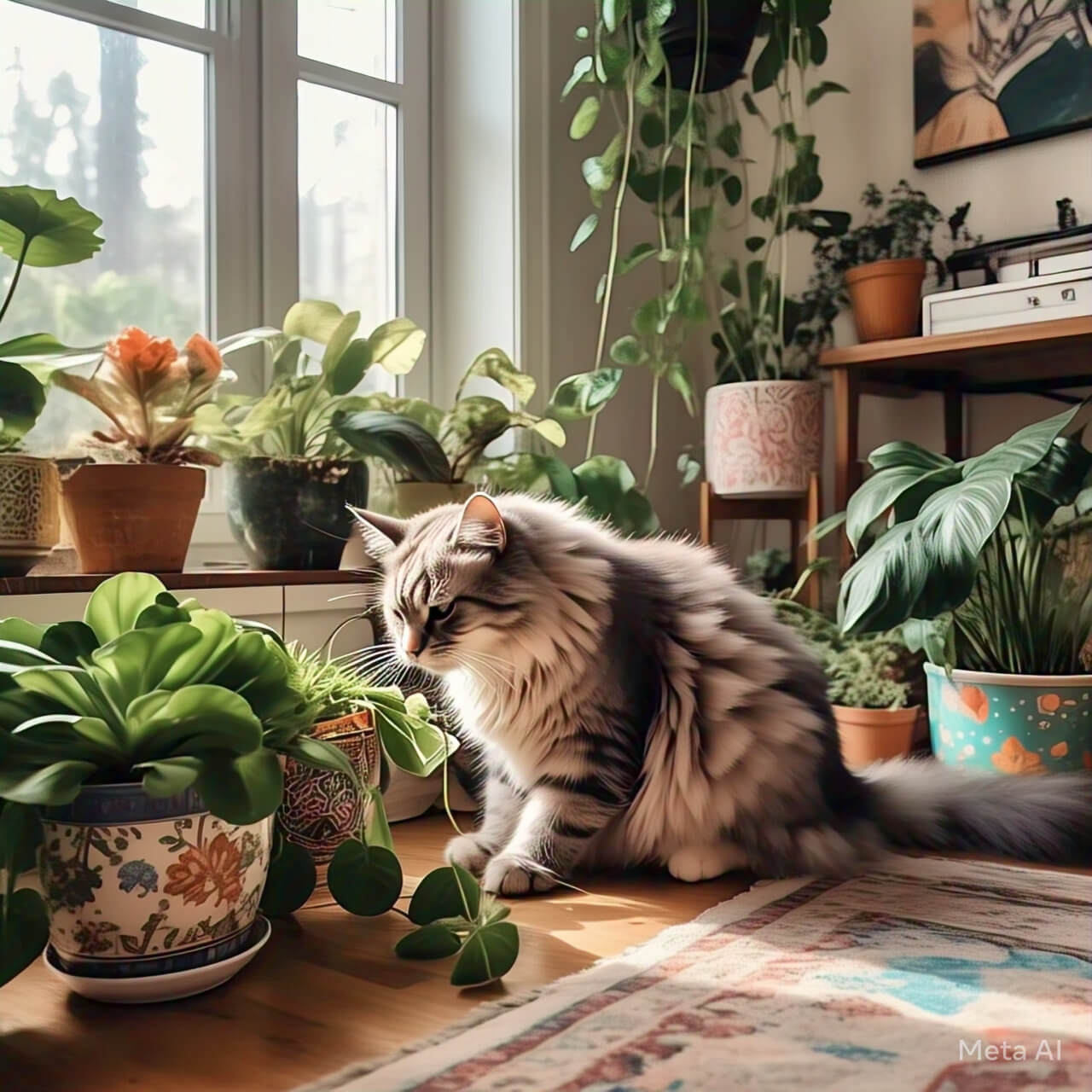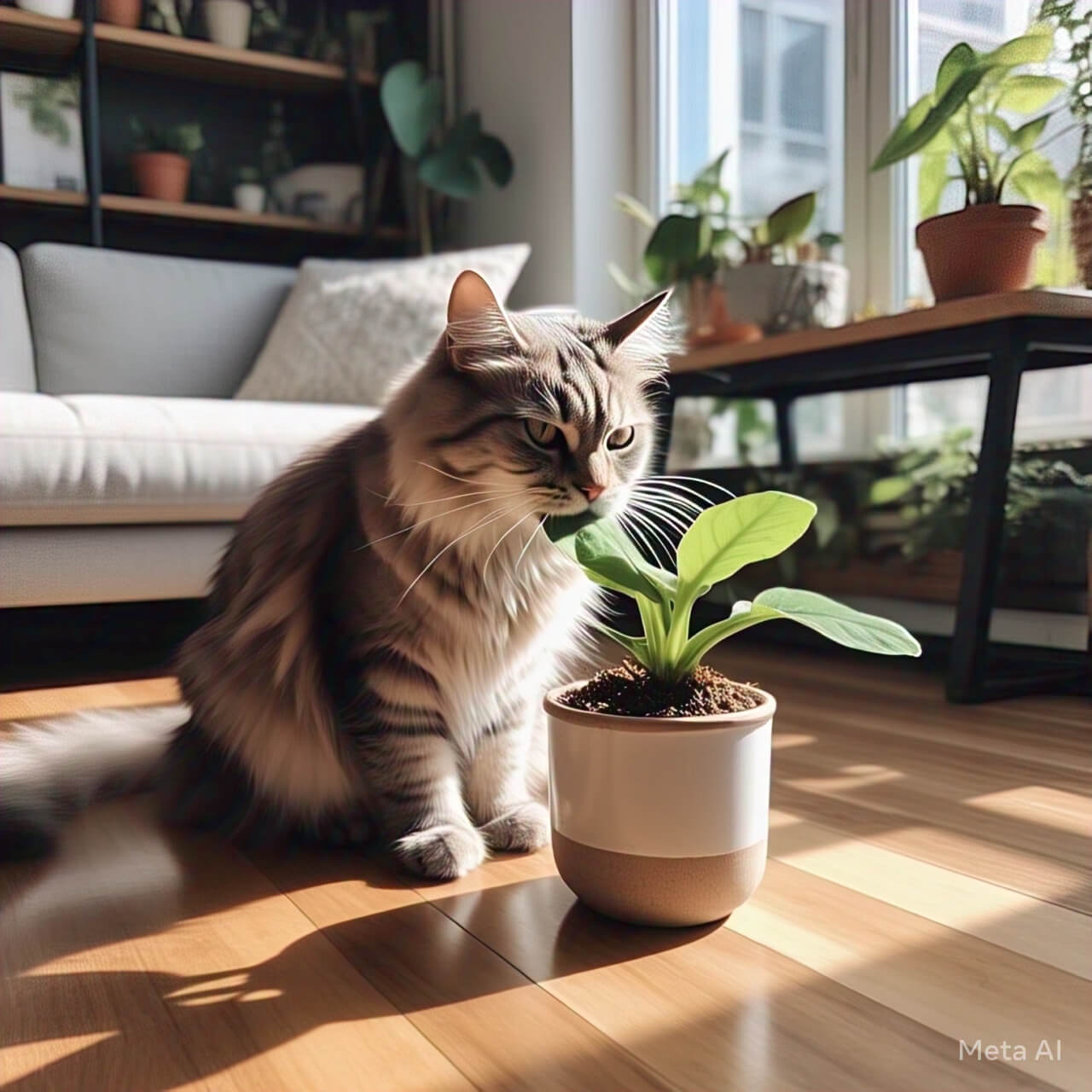How to Stop a Cat from Eating Houseplants: Cats love to explore, and sometimes that means nibbling on your houseplants. While it may seem harmless, some plants can be toxic to cats. If your furry friend won’t leave your plants alone, don’t worry—there are simple ways to stop this behavior. First, make sure your plants are safe for cats. Remove any toxic ones and replace them with pet-friendly options. Next, provide your cat with alternatives like cat grass, which is healthy and satisfies their urge to chew.
You can also use deterrents like bitter sprays or aluminum foil around the plants to keep your cat away. Another trick is to place the plants in areas your cat can’t reach, like high shelves or hanging baskets. Training your cat with positive reinforcement, like treats when they ignore the plants, can also help. If your cat is bored, play with them more often to distract them from the plants. Keeping their environment engaging with toys and scratching posts can reduce their interest in greenery. Consistency is key—keep reinforcing good behavior, and over time, your cat will learn to leave your plants alone.

10 Tips to Stop Your Cat from Eating Houseplants
- Remove toxic plants
- Use cat-friendly plants
- Offer cat grass
- Spray bitter deterrents
- Place plants out of reach
- Use aluminum foil
- Train with positive rewards
- Increase playtime
- Provide toys
- Use hanging planters
1. Remove Toxic Plants
Some houseplants are dangerous for cats. Lilies, aloe vera, and pothos can make your cat sick. Check if your plants are toxic and remove them. Replace them with safe options like spider plants or Boston ferns. Keeping your cat safe is the first step.
2. Use Cat-Friendly Plants
Cats like to chew, so give them safe plants. Cat grass, wheatgrass, or catnip are great choices. These plants are non-toxic and satisfy their chewing habit. Place them near their favorite spots.
3. Offer Cat Grass
Cat grass is healthy and stops them from eating other plants. Grow it in a small pot and keep it where your cat can easily access it. This keeps them away from your decor.
4. Spray Bitter Deterrents
Cats hate bitter tastes. Use pet-safe sprays on your plants. A quick spray makes plants unappealing. Reapply regularly for the best results.
5. Place Plants Out of Reach
Move plants to high shelves or closed rooms. Cats are less likely to climb if it’s difficult. Hanging planters also work well.
6. Use Aluminum Foil
Cats dislike the sound and feel of foil. Wrap pots or place foil around plants. This simple trick keeps them away.
7. Train with Positive Rewards
Reward your cat when they ignore plants. Use treats or praise to reinforce good behavior. Over time, they’ll learn to avoid them.
8. Increase Playtime
Bored cats chew plants. Play with them daily using toys or laser pointers. A tired cat is less likely to misbehave.
9. Provide Toys
Keep your cat busy with interactive toys. Puzzle feeders and scratching posts distract them from plants.
10. Use Hanging Planters
Hanging plants are harder to reach. Install hooks or shelves to keep plants safe. This keeps your greenery and cat happy.

FAQs About Cats Eating Houseplants
| Question | Answer |
|---|---|
| Why does my cat eat plants? | Cats chew plants out of curiosity, boredom, or to aid digestion. |
| Are all plants toxic to cats? | No, but some are. Always check before bringing a plant home. |
| What plants are safe for cats? | Spider plants, cat grass, and Boston ferns are safe options. |
| How do I train my cat to stop? | Use positive reinforcement and deterrents like bitter sprays. |
| Can cat grass help? | Yes, it provides a safe alternative to houseplants. |
By following these tips, you can protect both your cat and your plants.









